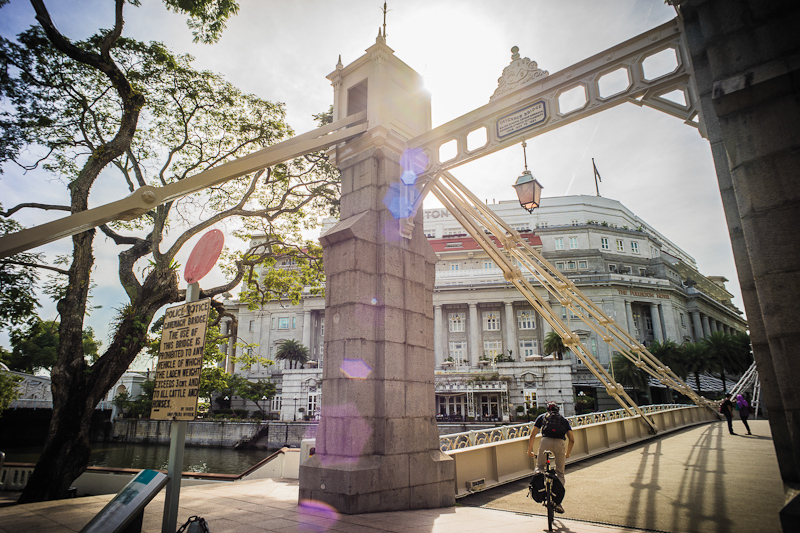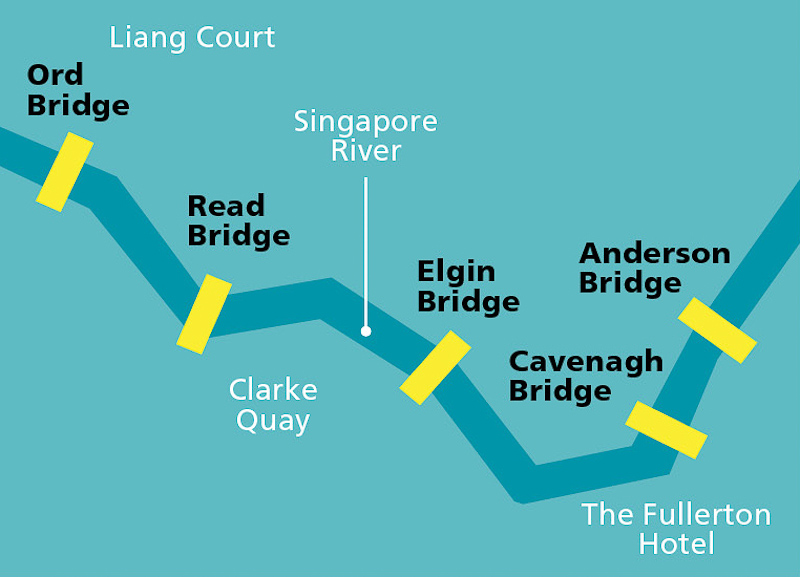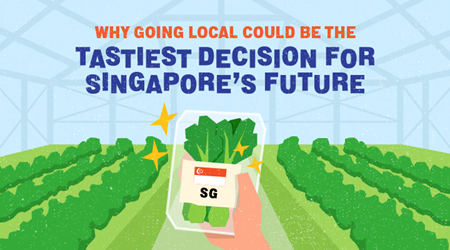Bridges Through Time: Heritage Bridges That Tell Singapore's History

Ord Bridge
In the 1960s and ’70s, stalls run by the colonial government at the end of Ord Bridge sold toddy, an alcoholic beverage of fermented coconut palm sap. Each mug cost about 20 cents then – a small luxury for the poor who wanted to drink their agonies away. Those who’d had a mug too many would often loiter there, and some even lay down on Ord Road, which used to run across the bridge before it became a pedestrian bridge. Those driving to the area often had to manoeuvre around the bodies on the road! Ord Bridge is now a pedestrian bridge – where you can still spot beer bottles left behind by revellers. The origins of this iron-trussed bridge are relatively less well known, but researchers say it was possibly designed for the Indian railways, as its width and length match the dimensions of mass-produced Indian railways in the past. Built in 1886, it is the second oldest existing bridge across the Singapore River and named after Major-General Sir Harry St George Ord, the first governor of the Straits Settlements who served from 1867 to 1873.
Listen to former journalist Tan Wee Him talk about toddy stalls.

Cavenagh Bridge
The oldest existing bridge across the Singapore River is known unofficially as the “love bridge”. Yes, proposals and wedding shoots often take place there. But it is also a scenic spot for following a Chinese tradition of throwing an orange into a river on the 15th day of the Chinese New Year, so that one would soon find a good spouse (just don’t get caught for littering).


Elgin Bridge
There was once a narrow wooden bridge called “Monkey Bridge” where the Elgin Bridge now stands. In the early 19th century, that was the only place to cross the Singapore River on foot. The bridge, officially named Presentment Bridge, was built in 1822 on just 12 closely spaced timber piles. One needed to be agile to walk on it, hence its nickname. In 1844, it was replaced by Thomson Bridge, also made of wood. Eighteen years later, that too was torn down for a new bridge made of iron, and renamed in 1863 after Lord James Bruce Elgin, India’s Governor-General from 1862 to 1863. Elgin Bridge was a key passageway that facilitated increasing trade between South Bridge Road, where most new immigrants lived, and North Bridge Road, where the British civic institutions and Kampong Gelam were. The bridge you see today is the second Elgin Bridge, sheathed in reinforced concrete and supported by steel frames and three arches.


Read Bridge
If you’re Teochew, you might know that Read Bridge was a popular night hangout for Teochew storytellers, who would set up shop with a soapbox, a kerosene-filled lamp and a wooden stool. The storytellers would charge a small fee based on the amount of time they spent telling stories, measured by the burning of a joss stick. Coolies, tongkang (bumboat) rowers and families often came with their own stools, and would drop coins into the soapbox after each session. First built in 1889 to replace Merchant Bridge, this bridge was the initiative of Scottish businessman William H. Read, who came to Singapore in 1841. (Read was the first non-government member of Parliament in colonial Singapore who made notable contributions to public service.)


Anderson Bridge
The beauty of this bridge’s majestic steel arches hides a gory past. During the Second World War, Japanese soldiers hung the severed heads of criminals and spies from the three arches as a warning against defiance. Singapore’s first steel bridge was built in 1910 to help the city cope with growing vehicle and pedestrian traffic, and reduce the load on Cavenagh Bridge. By the early 20th century, steel had replaced iron as the preferred material for bridges as it offered greater strength and resistance to corrosion.


- POSTED ON
Jan 13, 2015
- TEXT BY
Kelly Ng and Siti Maziah Masramli
-
Work Better
Instruction Manual May 2017









